




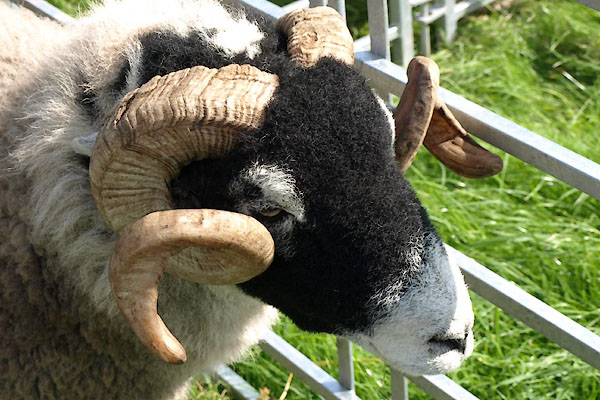
BTK78.jpg
Swaledale Sheep
Black faced mountain breed of sheep which was bred in the Swaledale area, Yorkshire. It is a hardy breed. The ewes are good mothers. Found on the fells all over Westmorland and Cumberland.
Black face with a grey muzzle, and grey spectacles round the eyes; short creamy fleece; black and white speckled legs; both rams and ewes have curling horns. The wool is slightly curly, coarse and loose; it soon dries after a wetting.
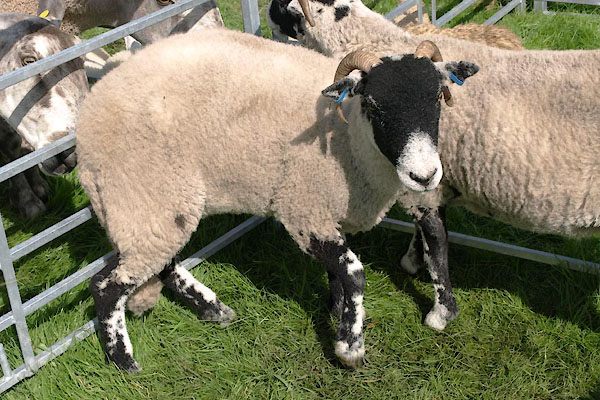
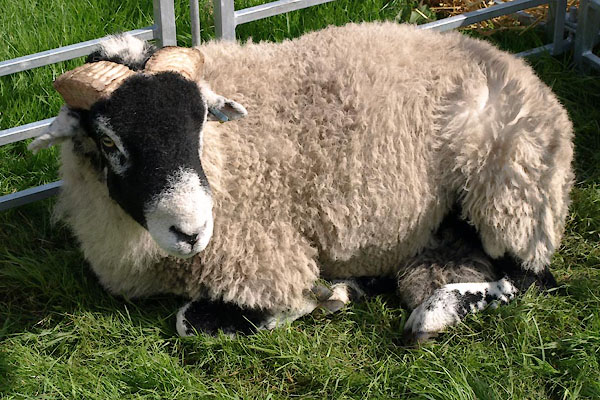

mountain sheep & hill sheep
staple 8 to 12 inches, average fleece 4 to 5 pounds, quality 28s to 32s
wool used for tweeds, carpets, and thicker knitting yarns
Swaledale ewes are mated with Bluefaced Leicesters produce a vigourous Mule, and with Teeswaters to produce a Masham.
Rough Fell Sheep
Also known as Kendal Rough Fell.
Black faced mountain breed of sheep which was bred in the Kendal area of Westmorland to supply wool to the local carpet industry. It is a very hardy breed. Found on the fells all over Westmorland and the western Yorkshire Dales.
Black and white face; roman nose; long white fleece groing to the ground; white legs speckled with black; both rams and ewes have short horns. The wool is long and coarse. Hefted. The meat is delicious.
The following pictures were taken at the Grayrigg and Selside Show in August, after clipping time, and do not show the rugged hairy fleece at its longest.
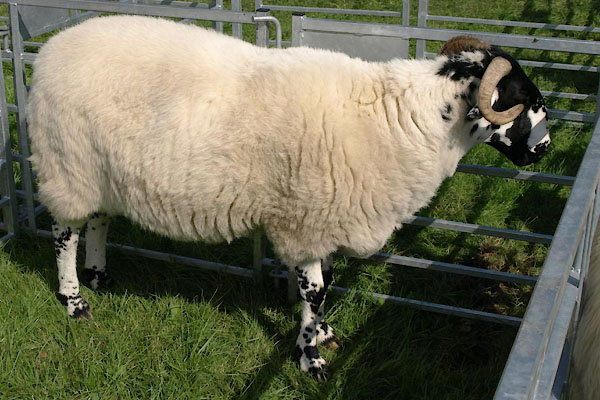
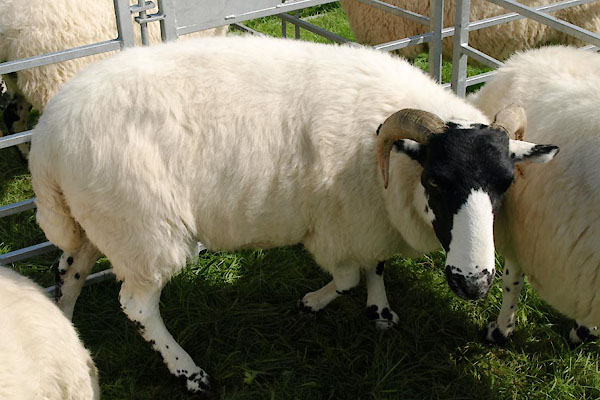
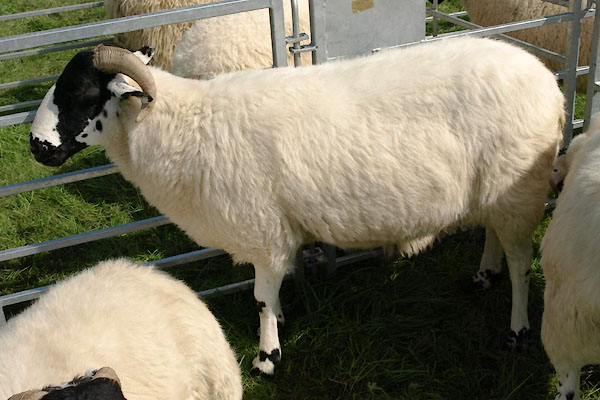
mountain sheep & hill sheep
staple 8 inches, average fleece 5 pounds
wool used for carpets, and also for filling mattresses
There is an active Rough Fell breeders' association.
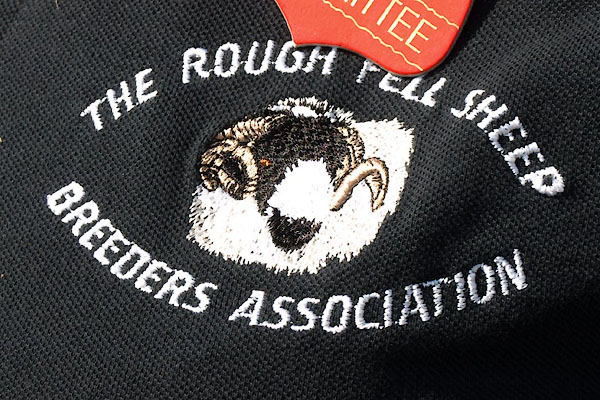
Herdwick Sheep
Mountain breed of sheep believed to originate from Scandinavia, brought by norse settlers. It is a very hardy breed capable of living on the mountains with little or no supplementary feed. Found on the fells in the west of Westmorland and in Cumberland. The sheep are strongly hefted; they know their heaf, their pasture, and will return to home territory if taken away.
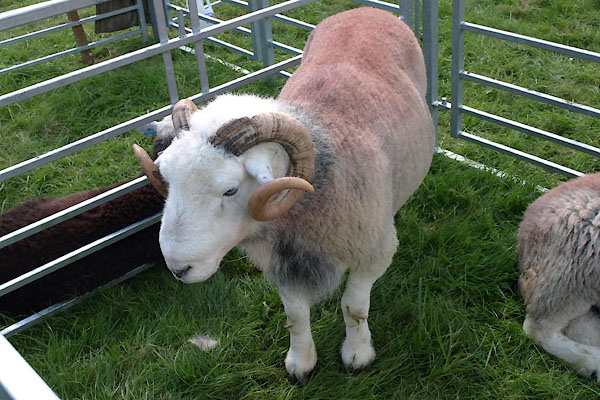
Lambs have a white face and black wool, the wool greys with age; rams have curling horns; there is often a stuffed toy appearance to these sheep..
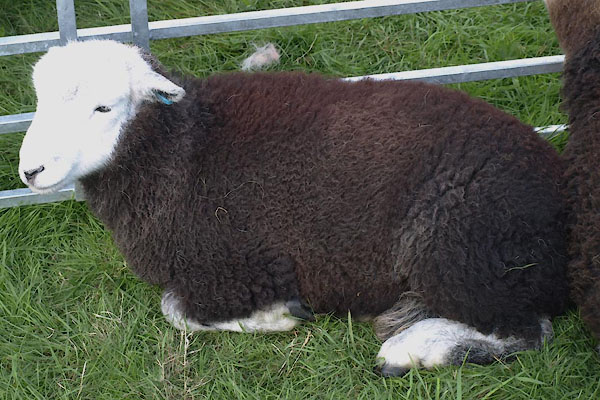
mountain sheep & hill sheep
staple 5 inches, average fleece 3 to 4 pounds, quality 28s to 32s
wool used for tweeds and carpets
Teeswater Sheep
Longwool sheep descended from the Yorkshire Longwool.
Grey or white head with a curly forelock; fine lustre wool in ringlets; bare legs; no horns.

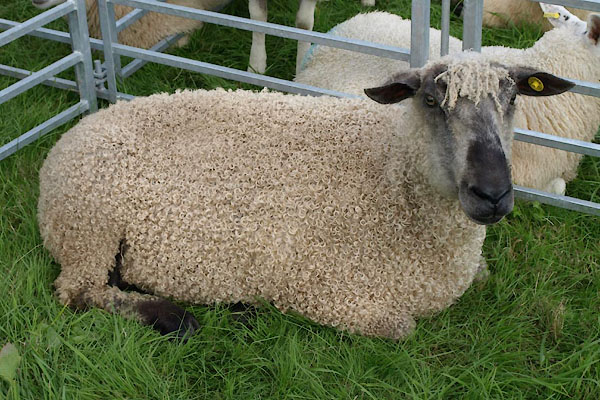
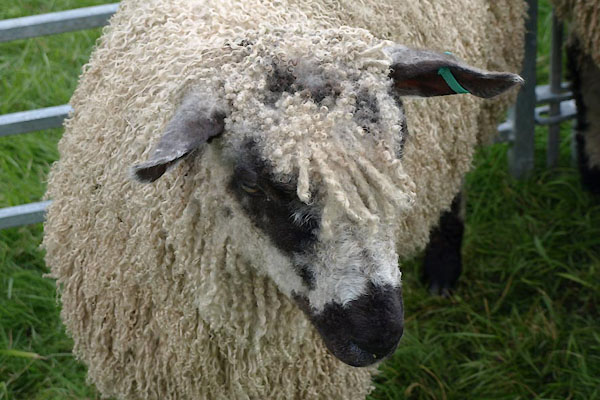
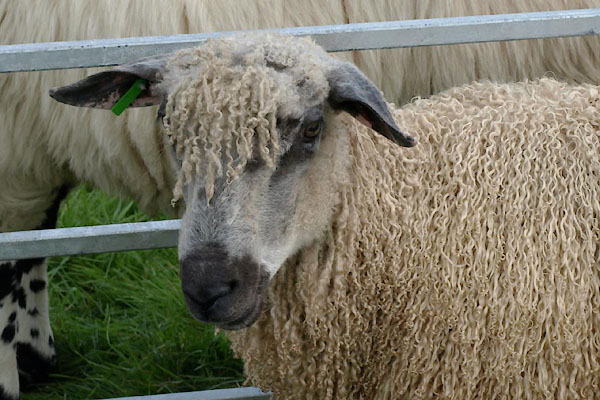
longwool sheep
staple 12 inches, average fleece 12 to 15 pounds
Swaledale ewes are mated with Teeswaters to produce a Masham.
Bluefaced Leicester Sheep
Bred from the Leicester Longwool to be more hardy. The tups are used for crossing with Swaledales.
Hairless 'blue' face, roman nose, long upright ears; tall, long legged; short whitey brown curly fleece; no horns.
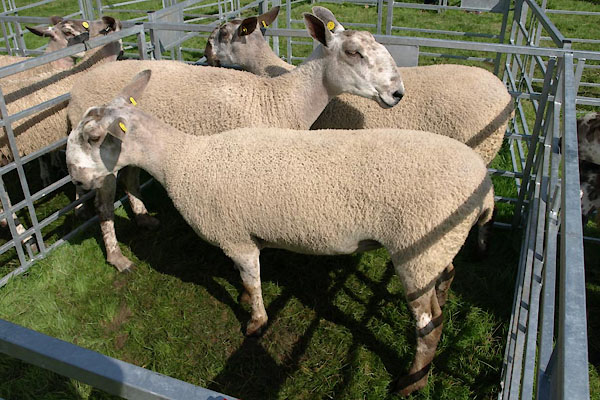

longwool sheep
Swaledale ewes are mated with Bluefaced Leicesters to produce a Mule.
Texel Sheep
Imported from Holland and/or France.
White face and wool; the face is pug like, sometimes wrinkled; no horns. The wool is medium quality.
At the Grayrigg and Selside Show, 2014:-
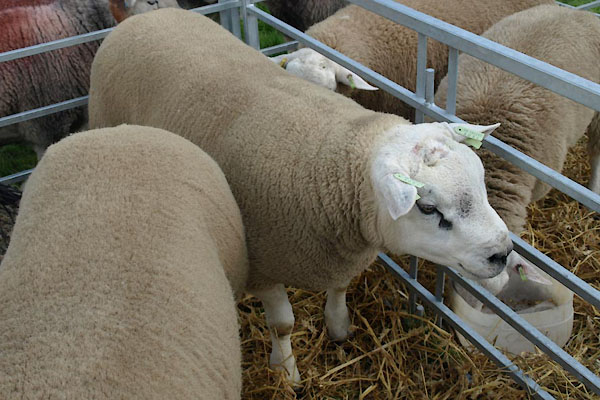
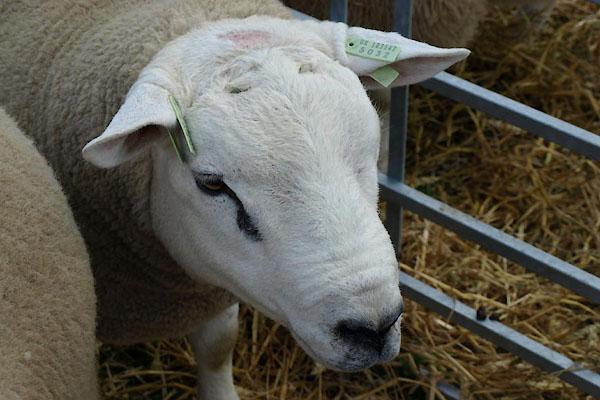
wool used for hosiery and knitting yarns
Hebridean Sheep
Dark brow fleece, grey with age; rams and ewes horned, usually two but sometimes four or more, or none; short to medium tail. Earlier known as St Kilda Sheep.
At the Grayrigg and Selside Show, 2014:-
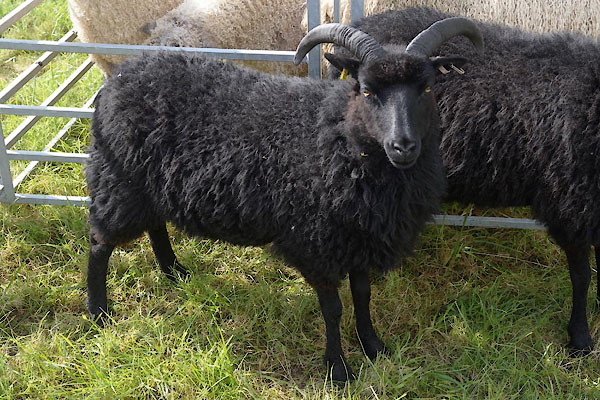
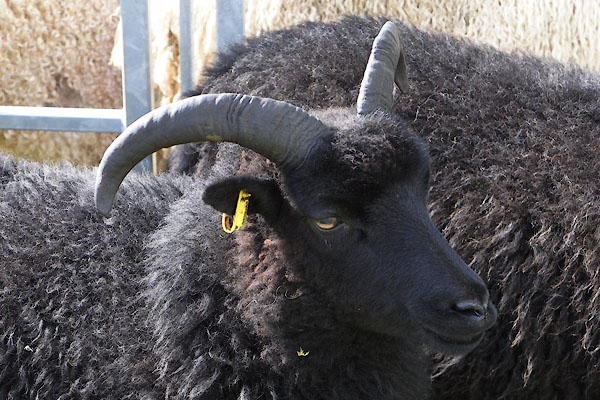
We were told that working with dogs they keep running - and so are good for dog training!
rare breedSuffolk Sheep
Bred in Norfolk and Suffolk for its superb wool, a shortwool down sheep. It is found most counties of England, but especially in East Anglia.
Black face with distinctive flop down ears; short and dense white fleece; no horns.
The photos are taken at the Selside and Grayrigg show, Westmorland, in August.
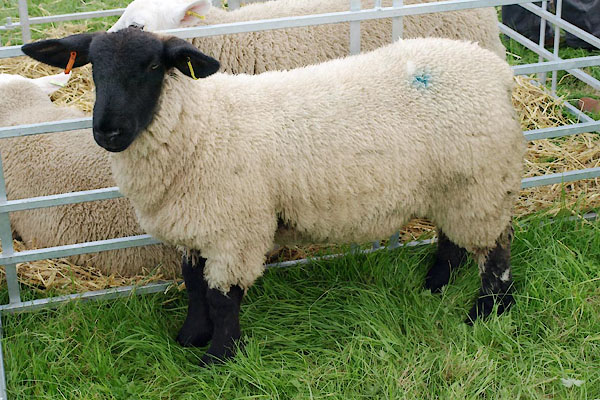
shortwool sheep & down sheep
staple 2 to 3 inches, average fleece 6 to 7 pounds, quality 50s to 56s
wool used for hosiery, hand knitting yarns, tweeds, flannels, and dress fabrics
Scottish Blackface Sheep
Black faced mountain breed of sheep, bred for its wool since medieval times. A very hardy and popular breed found in Scotland and the Pennines, and sometimes in the fells of Westmorland and Cumberland, it will live on poor fare.
Black face; long creamy white fleece; both rams and ewes have horns.

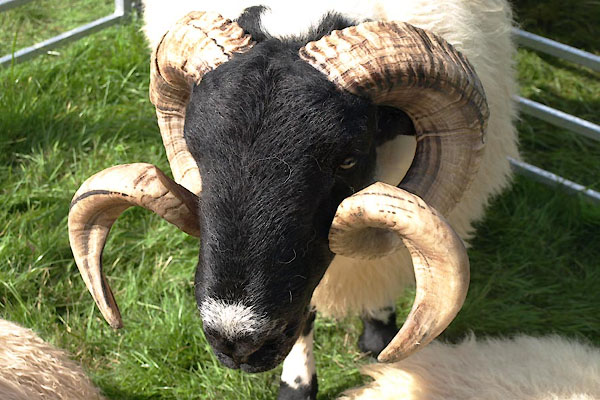
mountain sheep & hill sheep
staple 8 to 13 inches, average fleece 4 - 7 pounds, quality 28s to 32s
wool used for carpets, for example Axminster and Wilton, and also for some tweeds, for example Harris tweed.
Beltex Sheep
White head, but maybe black, blue or brown, the face and neck short and thick. White legs, upright pasterns, double muscled hindquarters. Tight dense wool, medium length staple.
Introduced from Belgium, 1989. Mostly used to cross with british sheep breeds.
At the Grayrigg and Selside Show, 2014:-
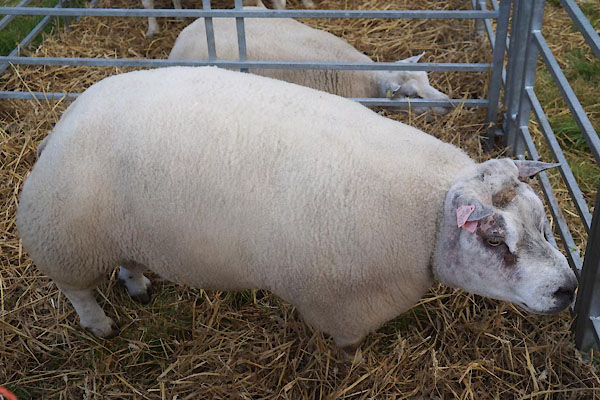
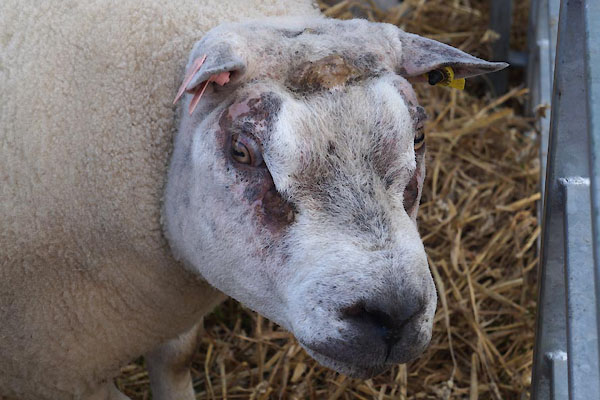
Badger Faced Welsh Mountain Sheep
or Jaydale Sheep?
At the Grayrigg and Selside Show, 2013 and 2014:-
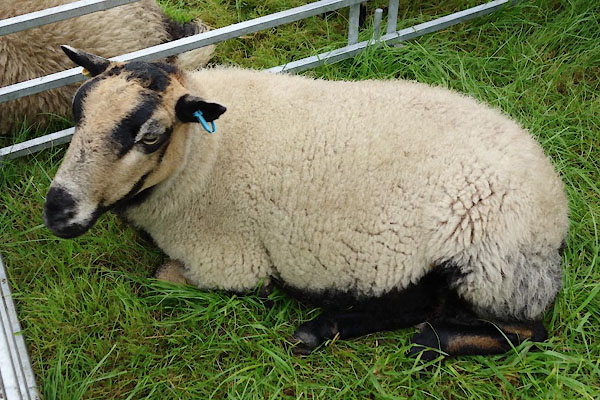
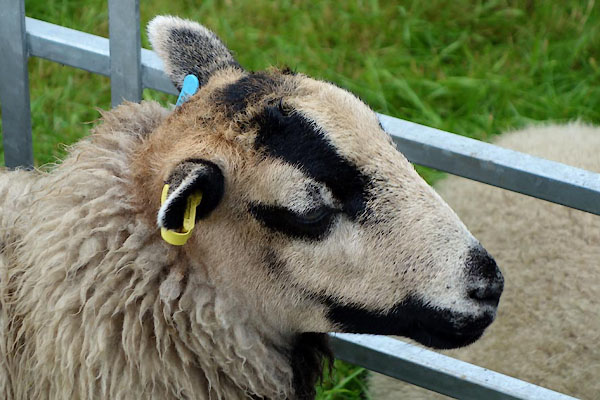
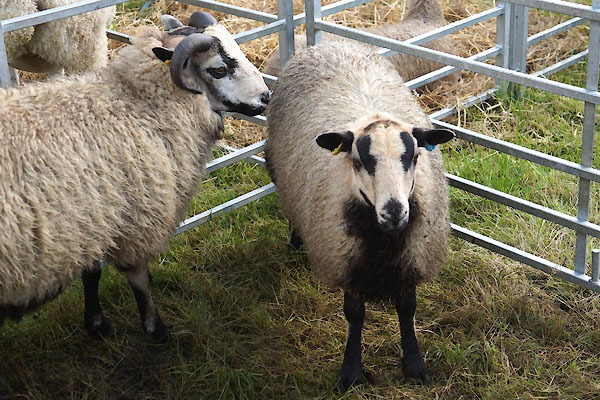
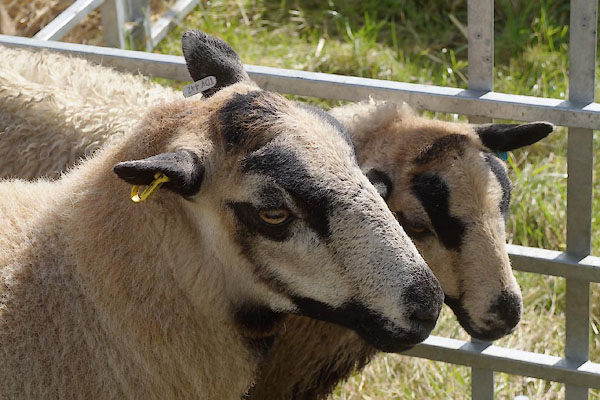

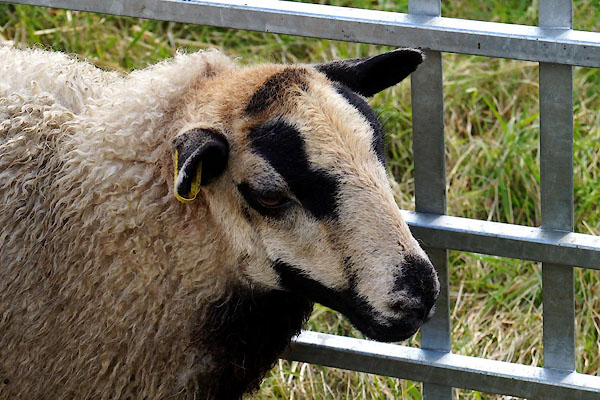 mountain sheep
mountain sheepZwartbles Sheep
Zwartbles sheep are a rare breed introduced from Friesland, Holland. They were originally developed for meat and milk. The distinctive features are a facial blaze, a white tip to the tail which is not docked, and two to four white socks.
Zwartbles sheep have been used as an alternative to the Blue Faced Leicester, crossed with a Swaledale to produce a Black Mule.
At the Grayrigg and Selside Show, 2014.

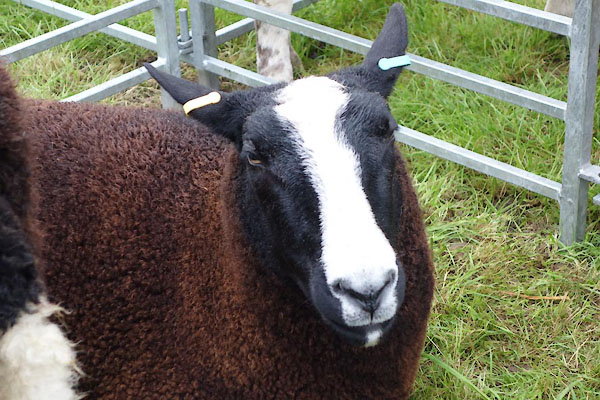 lowland sheep
lowland sheepJacob Sheep
Jacob sheep are a primitive breed; the spotted fleece is believed to have come from the Middle East via Spain, the horns from Viking breeds. They were kept in ornamental flocks in parks in the 16th century. Today they have a commercial use for wool for hand spinning.
At High Mill House, Crook (4.2.2015):-
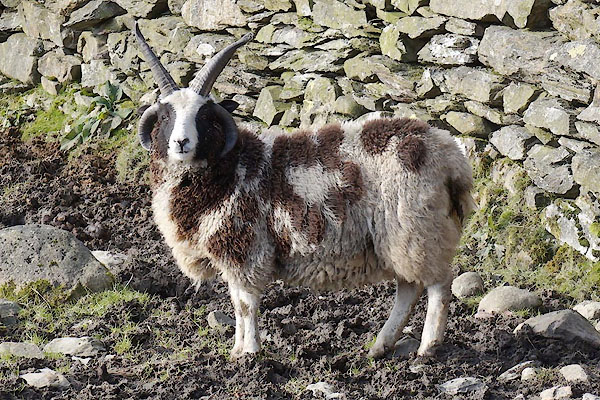
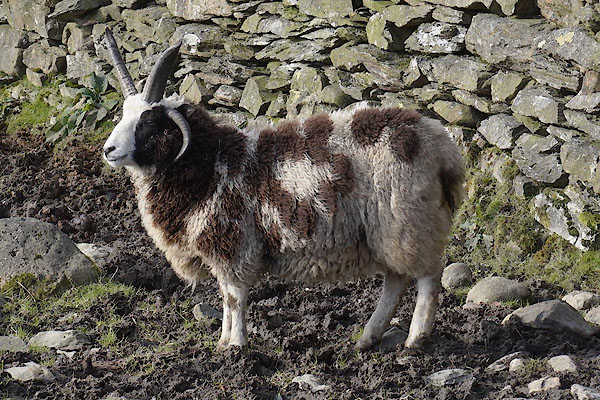
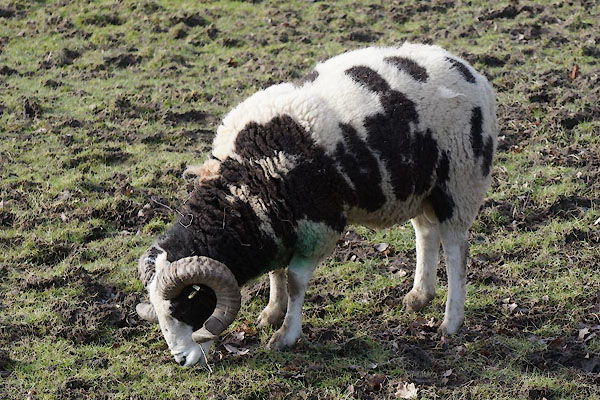
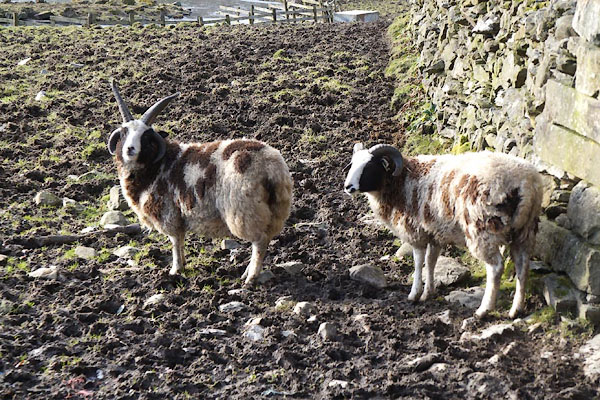
: 2007: Kendal Rough Fell Sheep: Rough Fell Sheep Breeders Association (Cumbria)
Briggs, Harry: 1983: British Sheep Breeds: British Wool Marketing Board (Isleworth, Middlesex)
Brown, Geoff: 2009: Herdwicks: Hayloft Publishing:: ISBN 1 904524 65 6
Dun, Kathryn &Farnham, Paul (photography): 2008: Beautiful Sheep; pportraits of champion breeds: Frances Lincoln Ltd (London):: ISBN13 978 07 1122 905 1
Fraser, Allan & Stamp, John T: 1949 &1961 (4th edn): Sheep Husbandry and Diseases: Crosby Lockwood and Son (London)
Gray, Anna &Brown, Geoff: 2005: Fell Sheep: Cumbria Fells and Dales Leader plus Programme (Penrith, Cumbria)
Henson, Elizabeth: 2000: British Sheep Breeds: Shire Publications (Princes Risborough, Buckinghamshire):: ISBN 0 85263 779 9
Kinsman, David: 2001: Black Sheep of Windermere: Windy Hall Publications (Windermere, Cumbria)
Mason, Ian: 1969: World Dictionary of Livestock Breeds, TYpes and Varieties: MOrris and Gibbs
Ponting, Kenneth: 1980: Sheep of the World: Blandford Press
Rawling, Bill: 1986: Homage to the Herdwick: Friends of Whitehaven Museum
Tinley, N L: 1949: Good Sheep Farming (Teach Yourself Books): English universities Press (London)

 Lakes Guides menu.
Lakes Guides menu.